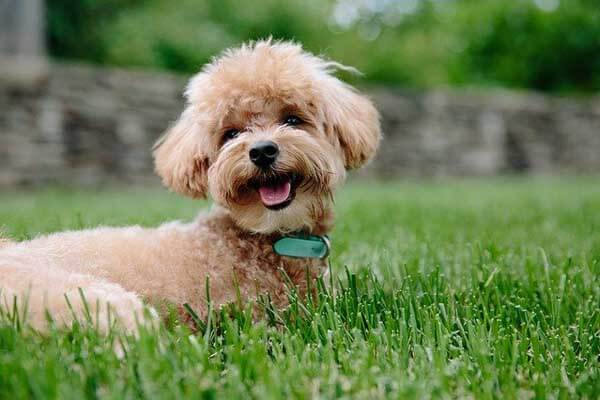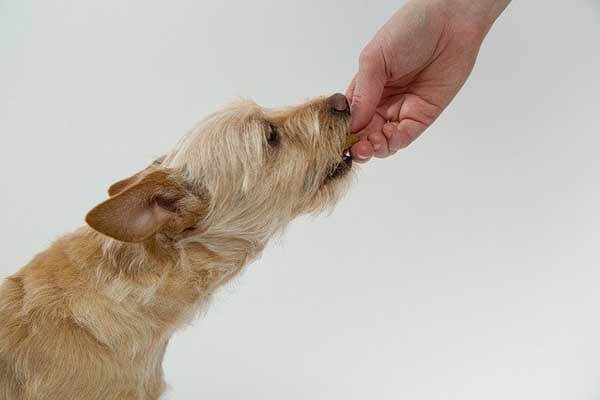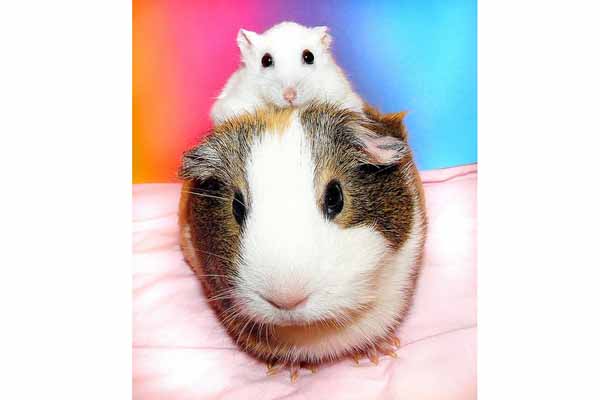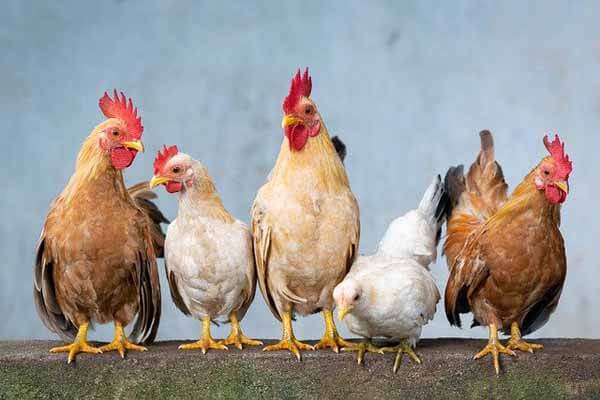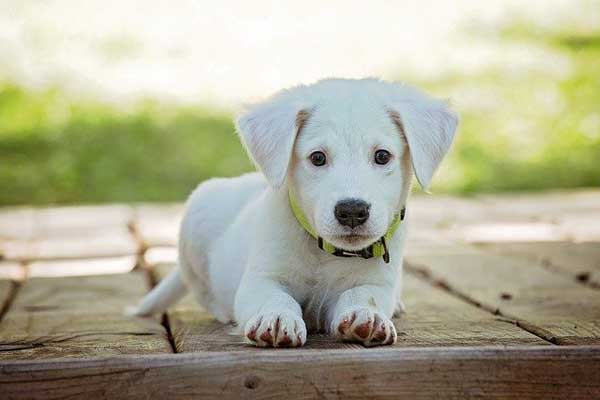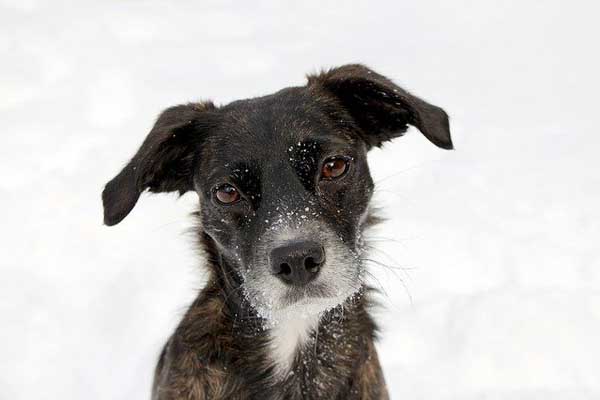Early training and socialization start your puppy off on the right paw.
When experienced dog owner Linda Alder brought home Oliver, a fluffy, 8-week old Australian Shepherd, the first thing she did was set up his crate. “This way, we knew that he would be safe when we were not home,” says Alder, who lives in Washington, D.C. “For us, it was about limiting the opportunity for Oliver to make mistakes.”
During Oliver’s first few months in his new home, the crate facilitated Oliver’s housetraining and shaped the puppy’s behavior. So what’s the best way to steer your youngster onto the right track?
“Start teaching him the moment you get him home,” says Steve Dale, a certified animal behavior consultant based in Chicago.
Here are strategies for making your puppy’s homecoming a success, especially when it comes to crate training, housetraining, and socialization.
Before Puppy Comes Home
Before your puppy becomes your newest family member, stock up on all the necessary supplies, such as an appropriately sized crate, quality puppy food, dishes, toys, and a collar and leash. Certified applied animal behaviorist Mary Burch, Ph.D., says she always makes sure she has her schedule in order before bringing a puppy home, so she “can spend plenty of time bonding and giving him all of the attention he needs and deserves.”
Prepare mentally before your puppy arrives, too. “When you get a puppy, your life is going to change,” says Steve Dale, a certified animal behavior consultant. “If you shortchange the puppy when it comes to crate training, housetraining, or socialization, you’ll pay the price later on.”
Week One
Crate Training
It’s all cute faces and puppy kisses when you bring that adorable pup home. But no matter how charming he is, your pup’s appeal will soon wear off if he destroys furniture, digs his sharp puppy teeth into your clothes, shreds the mail, or gets into the habit of soiling your carpets.
“A puppy being a puppy, if you don’t crate train or confine him in some way, he will explore,” says Dale, one of the editors of the American College of Veterinary Behaviorists’ new book Decoding Your Dog//ital// (Houghton Mifflin Harcourt, January 2014). “The No. 1 reason for crate training is safety because, unfortunately, most of our houses are not puppy-proof. No. 2 is to help with housetraining because puppies prefer not to eliminate where they eat and sleep.”
The crate provides a safety net for your puppy while he’s learning how to be a mannerly member of the family. It also provides “a welcome resting place when the puppy is tired and needs a break from the stimulating world around him,” says certified applied animal behaviorist Mary Burch, Ph.D., of Tallahassee, Fla., director of the American Kennel Club’s Canine Good Citizen and AKC S.T.A.R. Puppy programs.
Crates can teach your pup to calm down, as well. When a puppy gets overstimulated and out of control, a minute or two in his crate can help him settle himself. Of course, a crate should not be overused. Puppies need plenty of time outside the crate for training, socialization, and play.
Start the crate training process by introducing your puppy to the crate for periods of about five to 10 minutes while you’re nearby. After you’re sure the crate’s the right size for your pup — big enough for him to stand up, lie down, and turn around in, but not too much more than that — Burch recommends trying the following:
Situate the crate in a part of the house where the puppy is out of the way, but not isolated.
Make the crate a welcoming space for your puppy, with his favorite chew toy and a comfortable liner.
Install a water bottle that hangs from the side of the crate.
Practice leaving your puppy in the crate for up to 15 minutes at a time while you’re home but in another room. This way, he begins to understand he’s not being abandoned. Work up to longer amounts of time and leaving him in the crate overnight or while you’re away from home.
Never leave your puppy in the crate for more than three or four hours at a time.
“The most common mistake dog owners make concerning crates is leaving dogs who are not yet housetrained in the crate too long or too frequently during the day,” Burch says. “Crates are not babysitters. During housetraining, dogs need a good exercise session before going into the crate, and the schedule should be arranged to start with short times in the crate.”
Housetraining
Teaching your new puppy about where to use the bathroom can also save a lot of stress — and money spent on stain removers. “The biggest and most common mistake puppy owners make when it comes to housetraining pertains to scheduling,” Burch says. “Young puppies don’t yet have good bladder control and can’t be left for hours at a time in a crate.” When you first bring your puppy home, try the following:
Early morning
As soon as he’s up, get your puppy out of the crate and carry him outside. Don’t set his feet down until he’s in the place where he should go.
Feed your puppy his first meal of the day. Divide his daily food ration into four small meals, and feed these meals at about the same time every day. Inhaling food in large quantities can lead to coughing and distress, and puts your puppy at risk for aspirating food into the lungs, which can cause a sudden onset of pneumonia.
Take advantage of your puppy’s natural urge to defecate immediately after he eats. Follow each meal with a trip outside, where he can go in just the right spot.
Reward him for a job well done with a high-value treat and praise.
Late morning
Serve the second portion of his daily food ration.
Afterward, head outside for a potty break and praise.
Midafternoon and evening
Repeat the late morning routine, in addition to taking your puppy out for a potty break at least once every two hours and before bedtime.
If your puppy has an accident, take the mess outside to the place you want him to potty, then after the next time he eats, take your puppy to that spot and let him sniff there, giving plenty of praise when he does it right.
Socialization
The more you expose your puppy to a variety of new sights and sounds, the more comfortable he’ll be with new experiences throughout your life together. Proper socialization is the lifesaving process through which he learns to cope with other dogs, other animals, and the people and things around him.
Dale suggests exposing your puppy to everything, “from rabbis on roller skates to old people playing shuffleboard to people wearing Easter bonnets, using a walker, or whizzing by on Rollerblades.
“If more puppies were appropriately socialized, we’d save a lot of lives,” Dale adds. The first 12 weeks of life is a window of opportunity to socialize, and puppies who are not well-socialized before 4 months old often end up with serious behavior problems later on in life.
Dale suggests these socialization tips:
Invite friends to come over in small groups. Encourage your guests to take turns feeding the puppy pieces of his daily kibble ration.
Avoid forcing your puppy to engage with a new situation if he seems afraid. If he’s afraid of the vacuum cleaner, for instance, take it away and turn it on in another room. If someone else is home, turn on the vacuum cleaner and have the other person give the puppy treats at the same time, so he develops a positive association with the noise.
Expose your puppy to a variety of surfaces to walk on and climb, such as grass, gravel, and carpeting.
Week Two
As your puppy settles into his new routine, take him on daily leashed walks for exercise, to reinforce housetraining, and for socialization. “The most enriching thing you can do with your dog while he’s a puppy is to walk him on a leash,” Dale says.
When it comes to introducing your puppy to other dogs, proceed with caution, especially if your puppy hasn’t completed his vaccinations yet. If you have a friend with a gentle, vaccinated dog, ask your vet if it’s safe to have a puppy play date at your home, keeping both dogs leashed at first.
“Having your puppy meet an appropriate dog in a safe environment poses a minimal health risk, even if your puppy isn’t fully vaccinated yet,” Dale says. “And the benefits to early socialization with other dogs are huge.”
Going Forward
Even as your puppy gets older, continuing with housetraining, crate training, and socialization remains important. For continued success with housetraining, the transition to feeding three times a day when your puppy is about 4 months old. Follow the same regimen of taking him outside immediately after each meal and rewarding him for going to the bathroom outside. By the time your pup is 5 months old, work toward feeding him twice a day, still following every meal with an outside break and praise. Over time, this routine will become a habit for you both.
As soon as your puppy finishes his shots, sign up for a puppy class that focuses on establishing the basics of obedience training and socialization, like the AKC S.T.A.R. Puppy classes — S.T.A.R. standing for socialization, training, activity (exercise), and a responsible owner. “These are all of the things needed for your puppy to have a good life,” Burch says.
As for when to put the crate away, the right time is different for every dog. Dale suggests leaving the dog out of the crate for short periods when you’re away — 20 to 40 minutes — only after he’s confidently housetrained. It’s also good to give him a good walk or run before you leave home and provide appropriate items for him to play with or chew on, to keep him busy.
Even at 3 years old, energetic Oliver still loves his crate, often flopping down inside it with an audible sigh when playtime is over. He even uses his crate to tell his family that it’s time for bed. “Oliver makes a big production of going into his crate (in the evening) and noisily turning in circles before he lies down, in hopes that the rest of us get the message,” Alder says.
KITSON JAZYNKA
